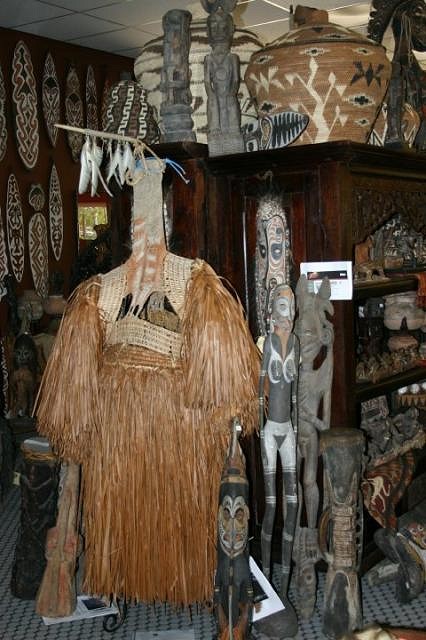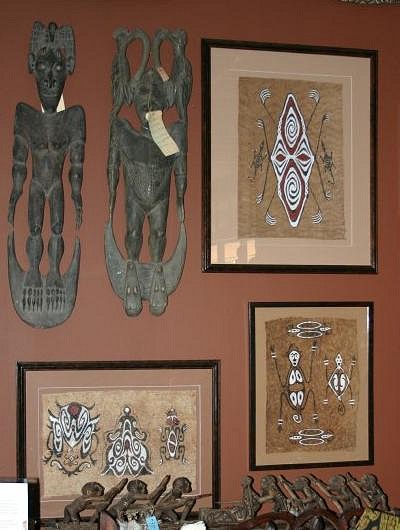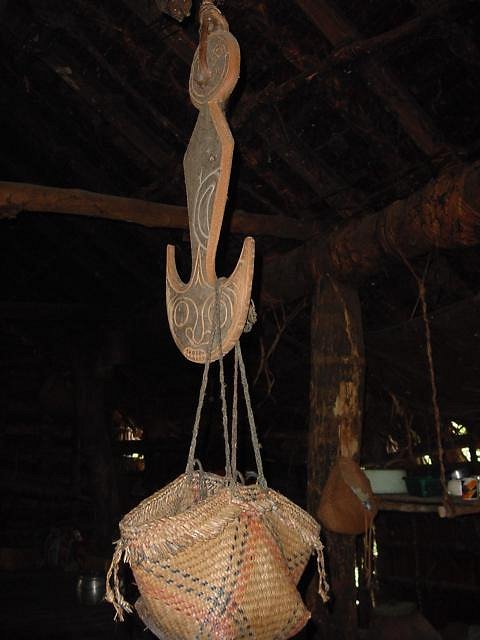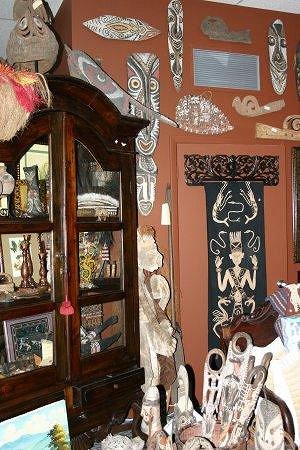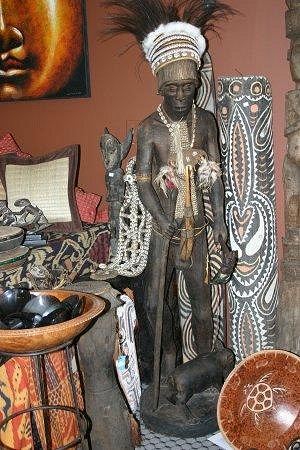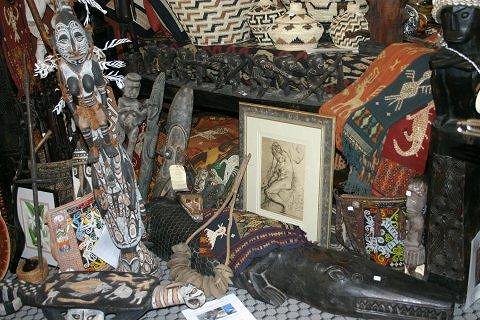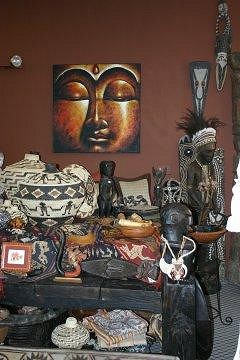Tiki Central / Collecting Tiki / Oceania, Etc: vendor of South Seas Art
Post #157776 by I dream of tiki on Tue, May 10, 2005 6:29 PM
|
IDOT

I dream of tiki
Posted
posted
on
Tue, May 10, 2005 6:29 PM
More pics
Asmat body masks are full-length costumes made of plaited cordage composed of rattan, bark, and sago leaf fiber. The body masks are usually painted with red and white pigment, decorated with carved facial features, and given skirts made of sago leaves. The end result depicts an otherworldly being, which appears only for special funerary ceremonies, known as jipae. For a mask ceremony, the village creates body masks. Once the masks were made, dancers donned the masks and became "spirits" of ancestors, dancing into the evening and night. In the morning, the spirits led a single-file procession through the village, viewing all the changes that had happened since the last ceremony, years prior, and since their death. They also call it "Baju Setan" (Ghost Armor). During a "Jipae" ceremony, the close relative of the deceased may wear it to symbolize the spirit or ghost of the dead and parades through the village while the children and women throw rocks presenting the act of the chasing and sending the ghost to the spirit world."
Long ago there was a woman who lived on a load anchor in the middle of the Sepik River. She thought she was about to give birth to a child but instead she laid three eggs. Two eggs became eagles and the other a crocodile who dove into the water. The two eagles caught men and ate human flesh. The crocodile stayed under the water and watched this happen, then went up and killed the two eagles. The human ancestors saw this and then built the haus tambaran with the finial figures shaped as eagles with crocodile tails. The woman is always present as the mother of the eagle and the crocodile. In front, on floor, hand carved out-of-one-tree-trunk life-size crocodile from Timor, and above on the bed from Timor as well, a long hand carved sculpture of an asmat canoe full of warriors rowing towards the enemy and battle. In front on left is a headrest in the shape of a mythical animal with lots of colored carvings from the sepik region."
[ Edited by: I dream of tiki 2009-02-20 23:31 ] |

